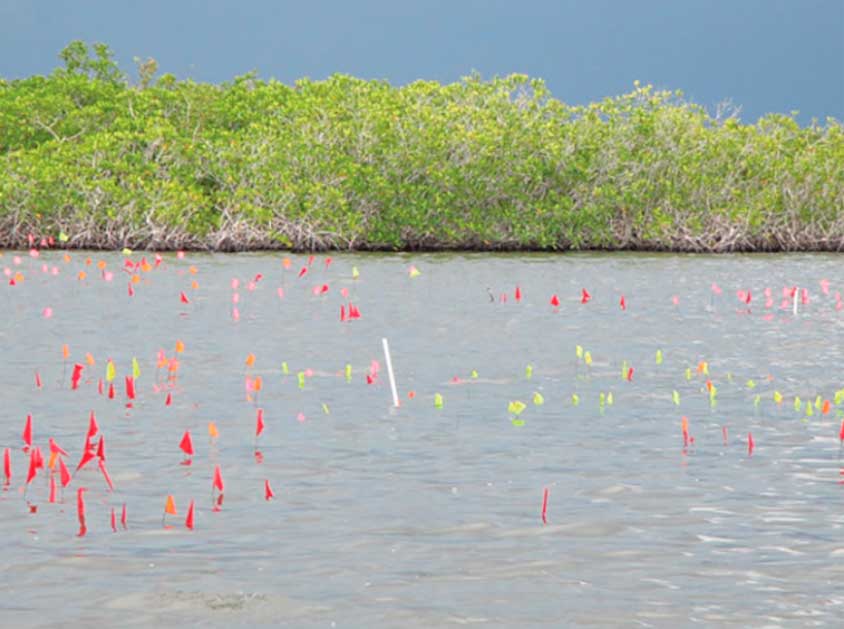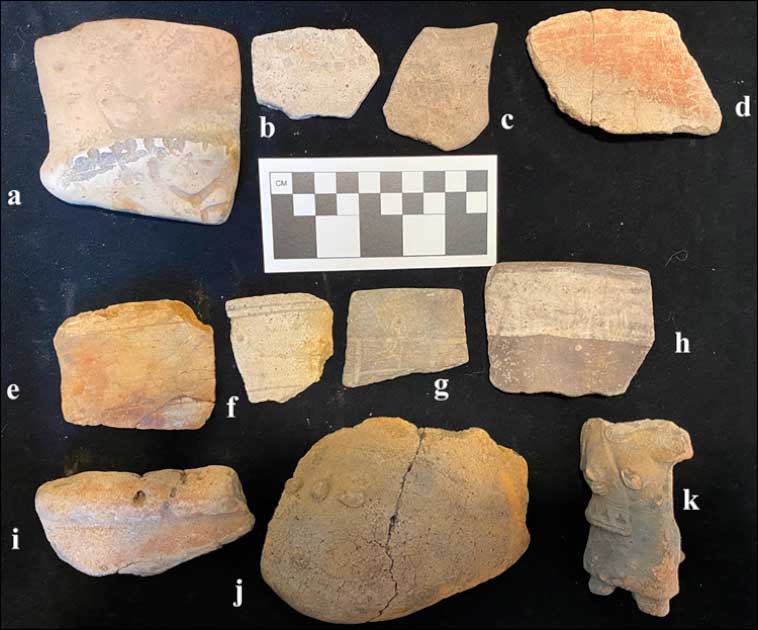One of the most legendary Mesoamerican civilizations, renowned for its sophisticated development of script, art, architecture, mathematics, astronomy, amongst others, was also known for its salt production! Evidence of this has been uncovered from Ta’ab Nuk Na, the largest known Maya salt works in Belize, submerged in a coastal lagoon at Paynes Creek National Park.
The residents were the salt workers themselves, providing a critical insight into the organization of workers and production at a critical juncture in Maya history. Dated to the 6th century AD, the Late Classic Maya era, large residential buildings along with three separate salt kitchens were found.
It would seem the Maya produced salt through two methods. They either evaporated saltwater and collected the residue, or boiled brine in what is known as “briquetage”, coarse ceramic vessels heated over a fire. At Ta’ab Nuk Na, the second method was deployed on a large scale.
The site lies in a forest of red mangroves, the salt-tolerant trees that thrive in coastal Central America. These finds, and more, have been published in a brilliant new study in the journal Antiquity. Located in southern Belize, the national park area has previously yielded as many as 100 other submerged sites from between 600 and 1000 AD, including several other salt works spread along the shore.
Salt: A Basic Necessity
“The inland Maya needed salt—a basic biological necessity—which was scarce inland and most was supplied from salt works along the coasts. We had excavated salt kitchens at other Paynes Creek Salt Works sites, but we wondered if the workers lived on site, which has implications for understanding the organization of salt production at the height of Classic Maya civilization,” said Professor Heather McKillop, from Louisiana State University and A&M College, one of the two authors of the study.
The authors carried out a systematic survey of Ta’ab Nuk Na, marking the location of key finds on the lagoon floor with a veritable forest of 600 flags. The researchers went the extra mile in surveying the site, including many features that wouldn’t traditionally be preserved outside a submerged setting. The flags were then digitally plotted and key elements were excavated.

Heather McKillop explained that mapping these individual artifacts on the sea floor allowed the researchers to see their distribution in relation to the wooden buildings, and a reconstruction of the other activities in the different buildings.
“[We found] hundreds of wooden posts that define the walls of Classic Maya ‘pole and thatch’ wooden buildings,” E. Cory Sills, the other author of the study said. “Since wood normally decays in the tropical landscape of the Maya area, the wooden buildings provide a rare view of the architecture that once dominated most ancient Maya communities.”
The mangrove peat is anaerobic, meaning that there is very little oxygen, allowing for its survival. Other finds in the recent past include building posts, ceramics, notched wood, a spinning whorl also made of ceramic, a fishing weight, a model boat, and a part of an ocarina shaped like a human, reports Gizmodo.
Working From Home: A Round the Clock Production Model
The Maya were clearly keen on the idea of “Work From Home” as their production was organized around their living space and backyard. They also performed a multitude of household activities such as fishing, preparing and cooking food, woodworking, and spinning cotton, reports Art News.
- The Dresden Codex: How Did The Maya Learn To Count?
- Where, or What, is Aztlan, Lost Homeland of the Aztecs?
The surplus was then transported inland to different marketplaces, and exchanged for various commodities like corn. Pottery and stone tools were also included, which have been founded at the residence.

The authors estimate that a large surplus would have ensued, with production estimates indicating as much as ton of salt a week produced from the site! Cumulatively, the salt works at Paynes Creek would have yielded enough salt for almost 25,000 people.
Since the Maya cities boomed during the Late Classic era, and populations rapidly expanded, these salt works formed the backbone of the Maya economy. Workers stayed, lived, and worked on site, and production was carried out all year round.
After 800 AD, Ta’ab Nuk Na’s salt production stopped, and shifted to another site in the creek known as Ek Way Nal. This is also a reconfirmation of how expansive and interconnected Maya society was, with a comprehensive trading network that allowed it to support a newly emerging populace.
Top image: A building post emerges from the sea, well preserved by the anaerobic mangrove peat beds. Source: Antiquity.
By Sahir Pandey